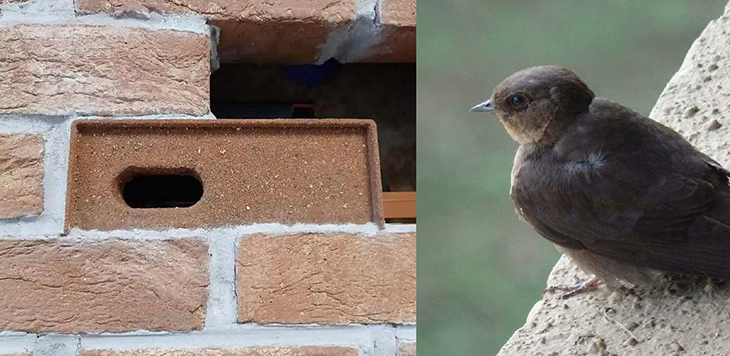
In the United Kingdom, tiny birds are finding new homes, all due to the courtesy of real estate development companies that are installing “swift bricks” into newly constructed buildings.
These bricks are basically regular building bricks with hallowed interiors, and they have become a very popular solution when it comes to supporting local bird populations. To date, over 30,000 swift bricks have been bought in the country, and over 10,000 homes have found ways to incorporate them into their design.
The intriguing aspect of this endeavor is the profound impact that human activities can have on wildlife. The significant decline, amounting to a 58% reduction, in the population of swifts, which are small migratory birds, was not primarily due to the expansive urbanization of British cities but rather a consequence of the refurbishment of older buildings.
In an effort to enhance the energy efficiency of buildings and reduce energy consumption to combat climate change, British construction practices inadvertently sealed off the small openings in walls that Swift birds had traditionally used as nesting sites. This disruption in their habitat led to a decline in swift populations.
However, the tide is turning as companies have developed swift bricks, which are bricks designed with hollow spaces for birds to nest in. Remarkably, incorporating just 3 to 4 of these bricks in every wall can transform a construction project into a bird-friendly environment.
Some companies, such as Manthorpe Building Products’ factory in Derbyshire, have already produced an impressive 20,000 swift bricks, while Ibstock, another firm, has sold 7,000.
The idea for these bricks actually came about from the Royal Society’s brainstorming ideas for the Protection of Birds due to the need to support the swift populations.
Dr. Guy Anderson, the RSPB’s migratory birds program manager, told The Guardian, “The great advantage of swift bricks and boxes is that they can work just as well in inner city areas with very little green space as anywhere else. Swifts can travel pretty long distances to find their insect food – all they need is a nest site.”
Swifts are remarkable creatures, spending approximately 10 months of the year in flight. They perform all their essential activities, including drinking and hunting for flying insects, while in mid-air. When they rest, they close one eye and deactivate one-half of their brain. These remarkable birds migrate all the way to Africa before returning to the UK to breed.
Currently, there is a petition in the UK Parliament urging the mandatory inclusion of swift bricks in all UK buildings. While the government typically views such decisions as within the purview of local government councils, this petition has garnered significant support, with 104,000 signatures.
These swift bricks are similar to the concept of “bee bricks,” which is yet another initiative aimed at creating safe spaces for nature within British housing developments. In a promising development, Brighton and Hove council has made bee bricks mandatory in their area, illustrating just how important it is to include wildlife-friendly features in urban planning.
What are your thoughts? Please comment below and share this news!
True Activist / Report a typo


